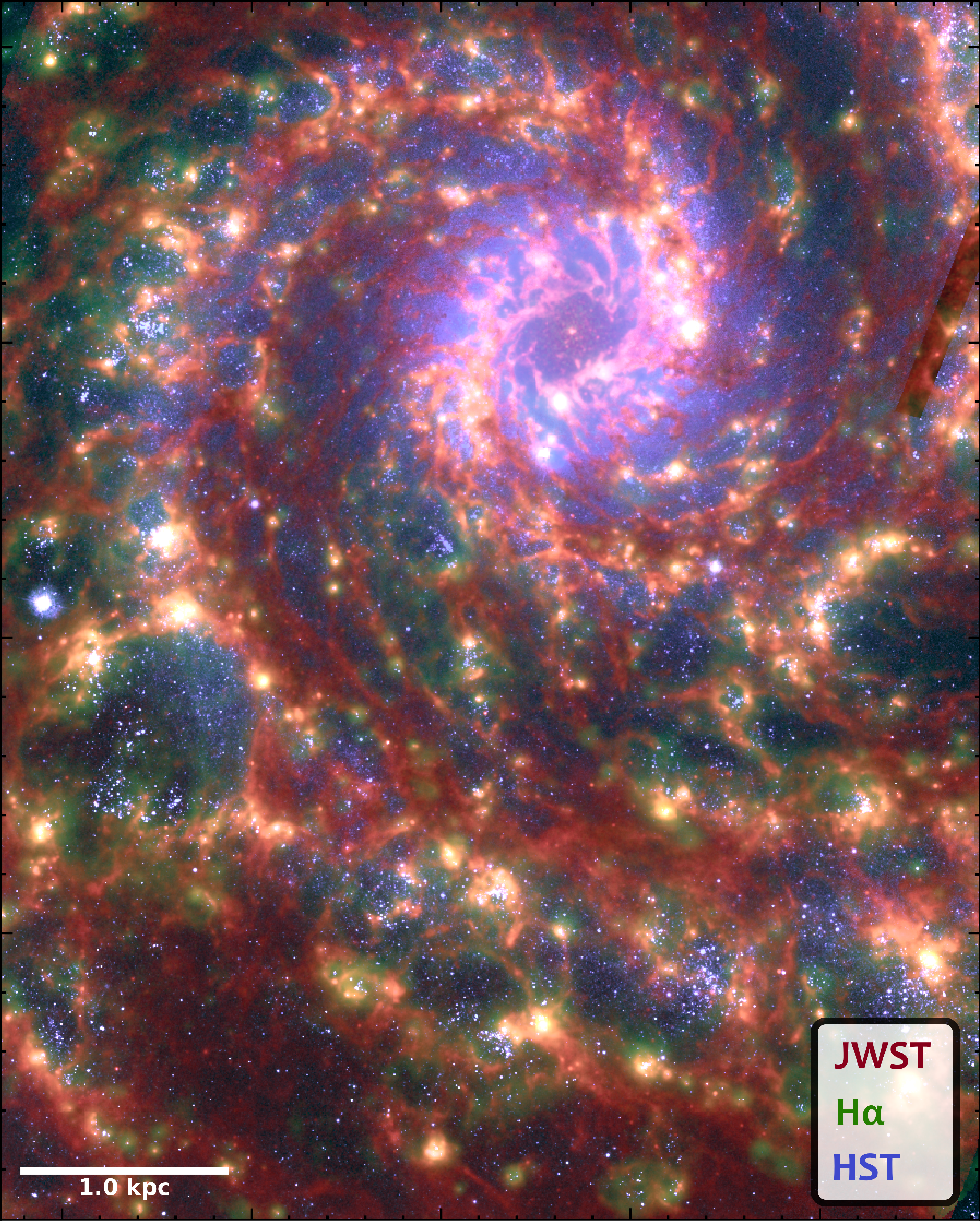Stars form in large molecular clouds, where the gas gets cool enough for it to contract and then, under gravity, to collapse into stars. But as these stars start to shine they heat up the gas, forming large bubbles, or superbubbles, that can be spotted by astronomers. And now you can see the first detailed image of these superbubbles in the phantom galaxy.
The phantom galaxy (or M74 or NGC 628, as it is technically known) has been observed by JWST as part of the PHANG Survey. Images made public and/or processed by citizen scientists show the tendrils of gas that underpin this spiral galaxy. This new image, presented by Dr Elizabeth Watkins at the National Astronomy Meeting 2023, represents more than just JWST’s keen eye.
The image includes a combination of observations from the Hubble Space Telescope and the MUSE instrument from the Very Large Telescope. It shows where the stars are creating these superbubbles, and how they are shaping this galaxy with them.

M74 shows off all its superbubbles in between hot and cold gas.
Image credit: ESA, NASA & CSA, E Watkins and the PHANGS-JWST Team. Image courtesy of Dr E. Watkins.
PHANG aims to survey stars, star clusters, and dust in 19 nearby galaxies that have also been observed by the Atacama Large Millimeter/submillimeter Array (ALMA). The goal is to study star formation in galaxies from beginning to end. And Dr Watkins has had some pretty incredible observations from ALMA as well.
ALMA’s many antennae can track carbon monoxide to see where the cold gas is, but it has a resolution four times lower than JWST’s. Still, the team has found 88 superbubbles in 18 galaxies. ALMA tracks the cold gas and Hubble the star formation, the emission from the oxygen (OIII) – which is where there are shocks and supernovae – and that of hydrogen (Hα), where the gas is being heated by the stars.

The 88 superbubbles from the ALMA and Hubble observations.
Image credit: ALMA, HST, PHANG Collaboration. Image courtesy of Dr E. Watkins.
“Since stars form from cold molecular gas, seeing how stars impact this gas helps me understand how stars impact and alter their own formation. These 88 superbubbles represent the largest sample of molecular superbubbles found in nearby galaxies,” Dr Watkins told IFLScience.
The phantom galaxy is located 32 million light-years from Earth in the constellation of Pisces.
The study based on these observations was published earlier this year in The Astrophysical Journal Letters.
Source Link: JWST Snaps Galaxy Positively Popping With Superbubbles